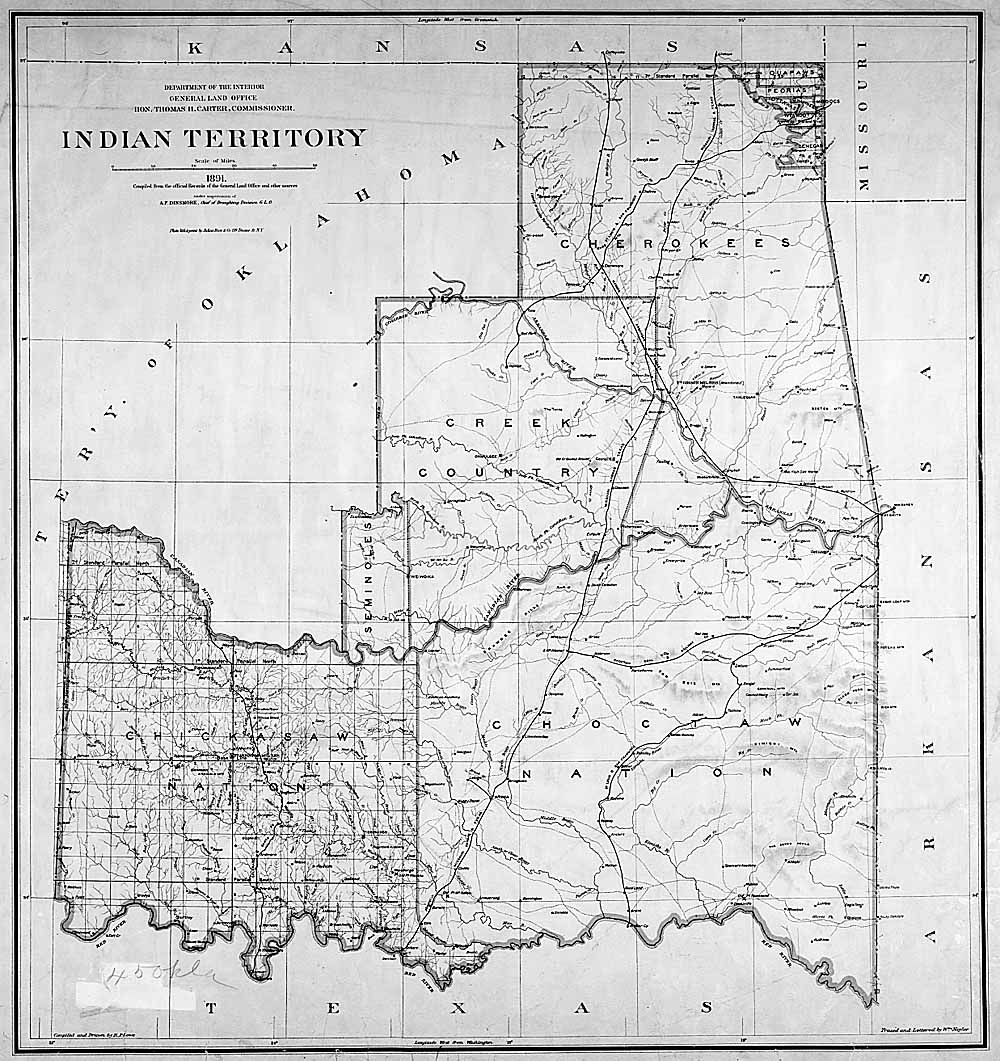During the late 1800s, the Choctaw, Cherokee, Chickasaw, and Creek nations worked with and against whites who wanted access to Native Lands. Various people, including J. J. McAlester who would become governor of the territory, did what they could to gain wealth. Many Native Americans did what they could to gain wealth. This was not new. The best example of the pursuit of wealth by Native Americans was the ownership of slaves before the Civil War. Many Native Americans owned large farms, even to the point of being called plantations by whites who traveled through the region.
However, by the late 1800s, after the Department of the Interior granted railroads access to some Indian lands, American Indians worked to impact that railroad access. Railroads wanted as much land as they could gain. Native Americans understood land laws and knew that they owned the title to the land granted to railroads. So, instead of being granted huge land grants like in other places in the West and South, railroads were only granted a right of way 200 feet wide. Railroads rightly complained that they could not do much with that land. Native Americans refused to sell their lands to the railroads. Instead, American Indians devised a way to maintain their land ownership, maintain control, and collect income from the usage of that land.
Native Americans began to lease their land. These complex legal documents laid out the parameters of the arrangments. Where coal was discovered, the lessee could mine the coal. That coal was subject to a tax paid to the tribe. It was also subject to a payment to the Native mine owner. It was only through leases that the nation could be understood as the owner of the land, that the mine was controlled by one person, and the way to gain access to that coal was only through an arrangement with the respective Native Americans. Once that arrangement was made, miners could be brought into the Indian Territory to mine the coal. The miners did not have any land rights at all – even if they rented a house or thought they purchased their land.
It is possible that the complex leasing arrangement of the Native Americans was the first of its kind in North America. It is probable that these leases were the most complex of any land arrangement at the time.
The land arrangement reveals yet again that whites were terribly wrong to insist that Native Americans rejected capitalism. Instead, it is more accurate that Native Americans practiced sophisticated capitalism – a way of managing their resources that outsiders did not fully understand.

One response
Thanks, Chanda Reveley for robvoss.com